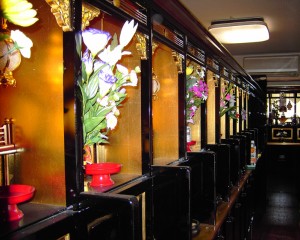 Japan has the highest cremation rate in the world, over 99%, with some local governments even banning burials. Until after World War II, cremation was reserved for the rich, but once the cleanliness and efficiency of the practice were recognized, cremation rates soared.
Japan has the highest cremation rate in the world, over 99%, with some local governments even banning burials. Until after World War II, cremation was reserved for the rich, but once the cleanliness and efficiency of the practice were recognized, cremation rates soared.
Interestingly, the country also has one of the world’s highest funeral costs. A traditional Japanese funeral consists of a wake, cremation, burial in a family grave, and a memorial service. The high cost of the funeral is largely due to the scarcity of burial plots in this densely-populated country. Though the ashes are generally buried, scattering of the ashes is becoming more common.
Cremation in Japan is typically accompanied by Buddhist rituals. At the funeral, the person who has died is given a new Buddhist name, with the belief that this will prevent them from returning if their name is called.
Before the casket is taken to the crematorium, the family will put flowers around the head and shoulders of the person who has died. The family is then present at the crematorium, as the casket is moved to the cremation chamber. They will wait through the two-hour-long process to receive the cremation remains once the process is complete.
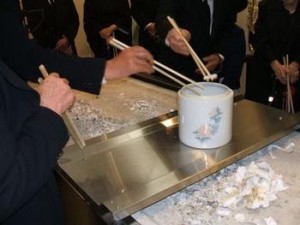 The family will then participate in separating the bones from the ashes – a fascinating ritual. They pull the bones from the ashes using large chopsticks, placing them in the urn in order to keep the body right-side up: first the bones of the legs, and so forth, with the bones of the head last. The ashes are usually stored in a single urn, though sometimes they are split among family members.
The family will then participate in separating the bones from the ashes – a fascinating ritual. They pull the bones from the ashes using large chopsticks, placing them in the urn in order to keep the body right-side up: first the bones of the legs, and so forth, with the bones of the head last. The ashes are usually stored in a single urn, though sometimes they are split among family members.
Traditionally, the urn is taken home with the family and placed on an altar in the home for 35 days before being taken to the cemetery, where it is then placed in the crypt of the family grave.
A number of memorial services will be held in the first 49 days after the funeral, though local customs vary. In some cases, memorial services will be held daily for the fist 7 days, some will be held periodically throughout the 49 days, and some will be held on the 7th, 49th, and 100th day after the funeral. After that, memorial services continue to be held periodically for years to come.
The Japanese Family Grave
Practices, of course, vary from family to family, but here are some interesting traits one might find in a Japanese cemetery:
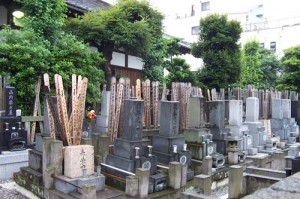 The name of the person who paid for the monument engraved on the side of it. The names of the people buried there will also appear on the monument, on a separate stone in front of the grave, or on a “sotoba” or wooden board behind the grave.
The name of the person who paid for the monument engraved on the side of it. The names of the people buried there will also appear on the monument, on a separate stone in front of the grave, or on a “sotoba” or wooden board behind the grave.
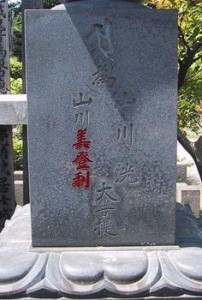 Quite rare now, this special tradition used to be applied to the graves of couples: Both the wife’s and the husband’s name would be engraved in the monument, but the name of the surviving spouse would be in red. When he or she passed away, the color was removed. Some believe that this signified the surviving spouse waiting to join the one who has passed.
Quite rare now, this special tradition used to be applied to the graves of couples: Both the wife’s and the husband’s name would be engraved in the monument, but the name of the surviving spouse would be in red. When he or she passed away, the color was removed. Some believe that this signified the surviving spouse waiting to join the one who has passed.
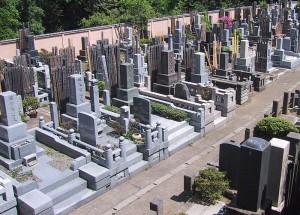 Occasionally, a portion of the ashes is also given to the company for whom the person worked, placed in a company cemetery with the remains of other employees.
Occasionally, a portion of the ashes is also given to the company for whom the person worked, placed in a company cemetery with the remains of other employees.
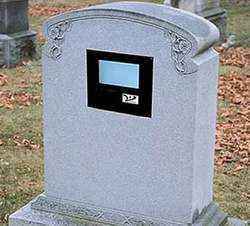 In the highly-technological culture of Japan, it is not surprising that some high-end gravestones even include a touch-screen that displays images of the person who has died, video messages, a family tree, and other information.
In the highly-technological culture of Japan, it is not surprising that some high-end gravestones even include a touch-screen that displays images of the person who has died, video messages, a family tree, and other information.

 A Look at Japanese Funeral Practices
A Look at Japanese Funeral Practices


 Octogenarian Author Jane Seskin Offers a Model for Aging and Living Well
Octogenarian Author Jane Seskin Offers a Model for Aging and Living Well

 Are “Rage Rooms” a Healthy Outlet for Grief and Burnout?
Are “Rage Rooms” a Healthy Outlet for Grief and Burnout?















What a data of un-ambiguity and preserveness of precious knowledge regarding unexpected feelings.
Report this comment
A surprise to see this blog cover the customs of Japan. When my father died here in the US I practiced a blending of US and Japanese traditions. I have a personal altar in my home to respect my father’s memory which is also a common practice.
Report this comment
I’m planning a trip to Osaka at the end of the year to visit a good friend who just recently moved back home there. I’ve been doing my research and am so fascinated by Japanese culture and traditions; never thought to look into the funeral practices though. Thanks so much for this enlightening post! The work your website is doing is so important.
Report this comment
I was so impressed your site. I’m working as a funeral director in japan and I wanted to study about funeral of other countries and meet ppl beiing interested in funeral and things around that. I’ll visit here again to learn more. It’s very important for me. Thank you.
Report this comment
Hello! I am an apprentice funeral director here in Milwaukee, WI USA. I have been working in a funeral home for about a year. It is interesting work. I have been learning Japanese on my own for two months now. I want to visit Japan and would love to see and learn more about their funeral practices first hand! Japan is a beautiful country and I love the language and culture. I’ve been looking online for more information about funerals, funeral directors, etc in Japan but cannot find much information unfortunately.
Report this comment
Different countries have different funeral practices. These blogs gives a precious knowledge of how to do funeral practices in japan. To know Funeral Services in San Francisco Visit Sullivan’s Funeral Home & Cremation
Report this comment
Would a garnet red color urn with autumn leaves imprinted on it be appropriate to use in a Japanese woman’s funeral
Report this comment
Thank you for your question. This would depend on if you are in Japan or the United States. Where is the urn to rest?
Report this comment
Wow, this post is amazing, Japanese funerals are really beautiful. I find amazing to read about other culture’s funerals, they can be so very different from ours, specially here in Spain. Thank you for the pictures and information, and nice blog, keep the good work.
Report this comment
Thanks for your thoughts. They are very visually beautiful! We appreciate you writing us from Spain! We hope you will continue to visit us!
Report this comment
Would the bones in the cremated remains be friable, in order to reduce them to the unidentifiable ashes typical of a British cremation? (re a Briton in Japan whose remains are to be returned to the UK)
Report this comment
This is great information our team always love to learn more information about funeral practices in other countries.
Report this comment